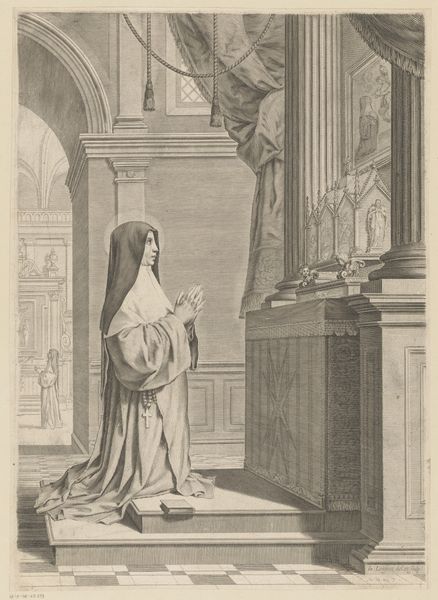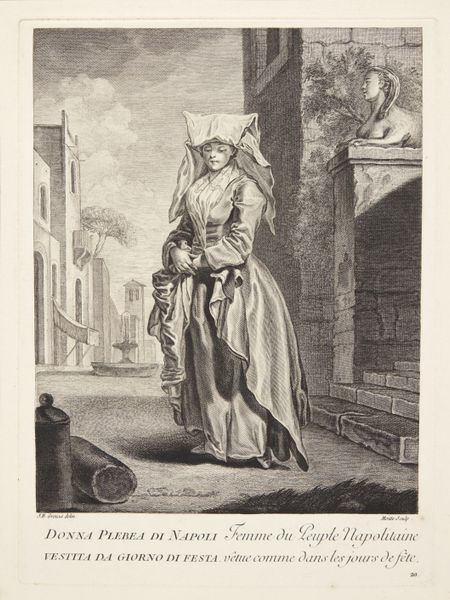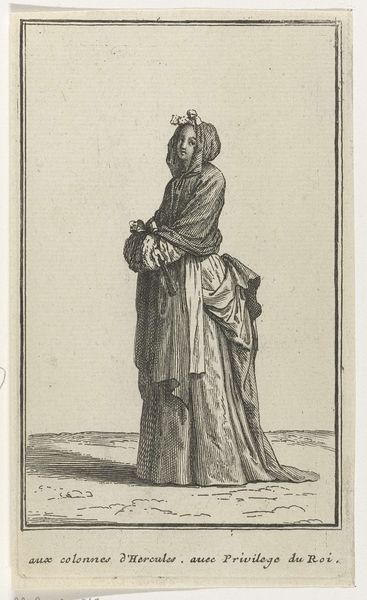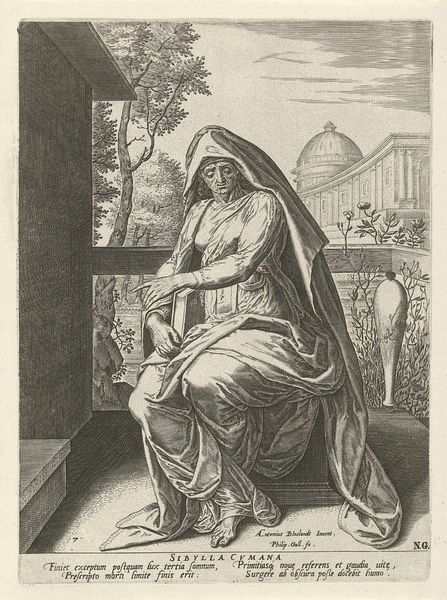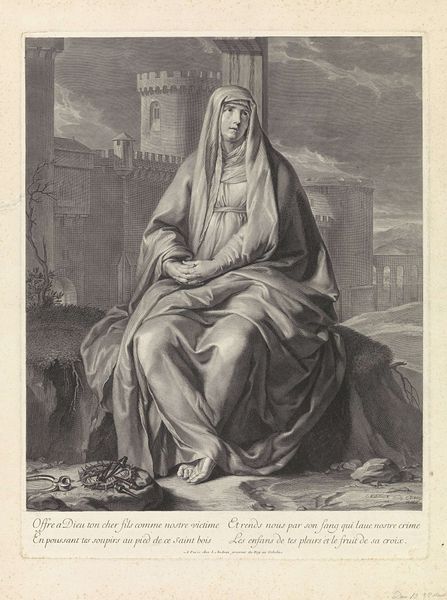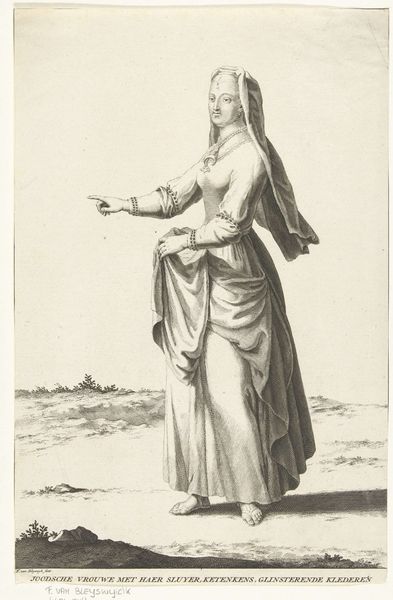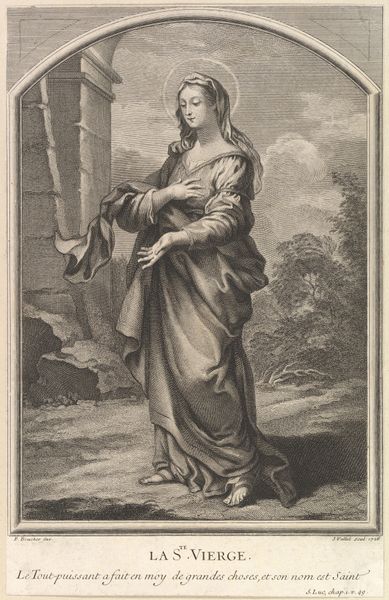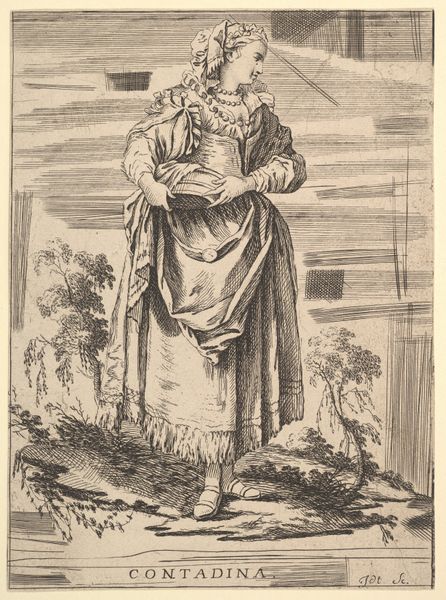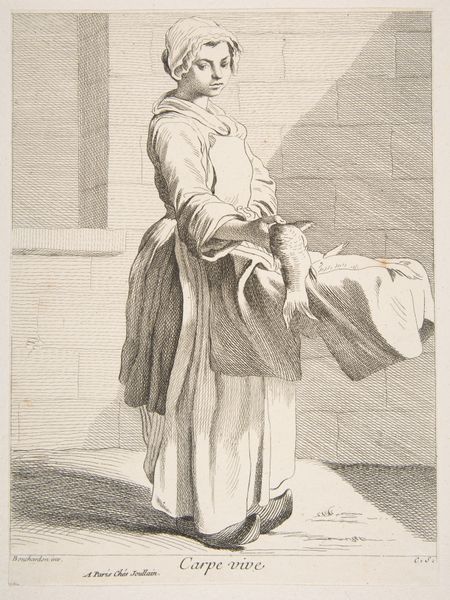
Dimensions: 307 mm (height) x 226 mm (width) (plademål)
Curator: This is Rose Angélique Moitte’s "Kvinde fra Bologne," or "Bourgeoise de Bologne" an etching and engraving from the 1760s. Editor: It’s fascinating! The delicate lines used to render her shawl and dress give an almost textile-like texture to the print. I wonder about the paper itself, what sort of material was common for prints like these? Curator: It's interesting to think about paper production during that time, given the cost of quality materials, printing was often subsidized by institutions, thus becoming an extension of cultural messaging. And let’s not overlook the subject. Her clothing suggests wealth and status but observe the composition within the city: How might this represent a subtle comment on class within the public sphere? Editor: Good point! One can almost feel the weight of her wool garments in the rendering, perhaps illustrating how she may feel confined by expectations or how cumbersome that societal burden can be. What was the production process like for an image like this? Curator: The etching process involved applying a wax ground to a metal plate, through which the design was drawn. The plate was then submerged in acid, etching the exposed lines. The engraving refines these lines for detail. Think of the politics inherent in that whole reproductive system; what was disseminated was carefully chosen and influenced. Editor: Right, each pull would depend on the even application of pressure, controlled wear of the matrix itself – a very material set of concerns driving the look of the finished image, I’m thinking about labor itself. Was Moitte typical as a female artist being commissioned? Curator: Less common, yes. Female artists often faced societal barriers and the pressures to conform to social standards for feminine artistry. We ought to consider what this work might represent concerning her aspirations, struggles, and reception in the public eye. Editor: It makes me consider the way we consume images even now – the physical object has receded, and yet our relationship to materiality may influence how we ascribe value. Curator: Precisely, understanding both the physical and socio-political processes allows us a fuller appreciation of the work and its significance within cultural history. Editor: Thinking about labor makes me appreciate the level of craft embedded in a print of this type. Thank you, it does lend insight into art production that encourages fresh analysis.
Comments
No comments
Be the first to comment and join the conversation on the ultimate creative platform.


